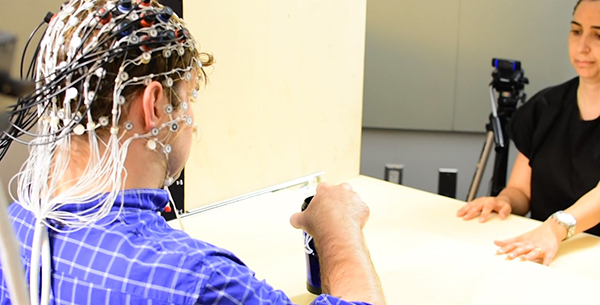
Spotlight: Harnessing light to study human development and the brain

Helga De Oliveria Miguel, Ph.D., and Doug Harrison demonstrate how they use fNIRS in their work.
Credit: Jeremy Swan, NICHD/NIH
Credit: Jeremy Swan, NICHD/NIH
The brain is one of the largest organs in the body, but studying the brain is not as easy as you might think. There are limitations to what researchers can do. Standard imaging technology, such as MRI, require that a person lie still in a scanner for long periods of time, something that can be challenging for children and those with disabilities. However, newer portable imaging systems may help researchers overcome these challenges to conduct studies more easily.





















.jpg)












No hay comentarios:
Publicar un comentario